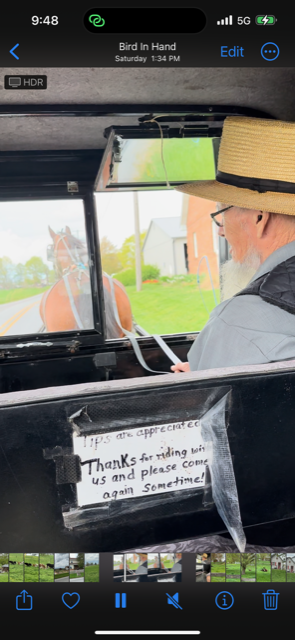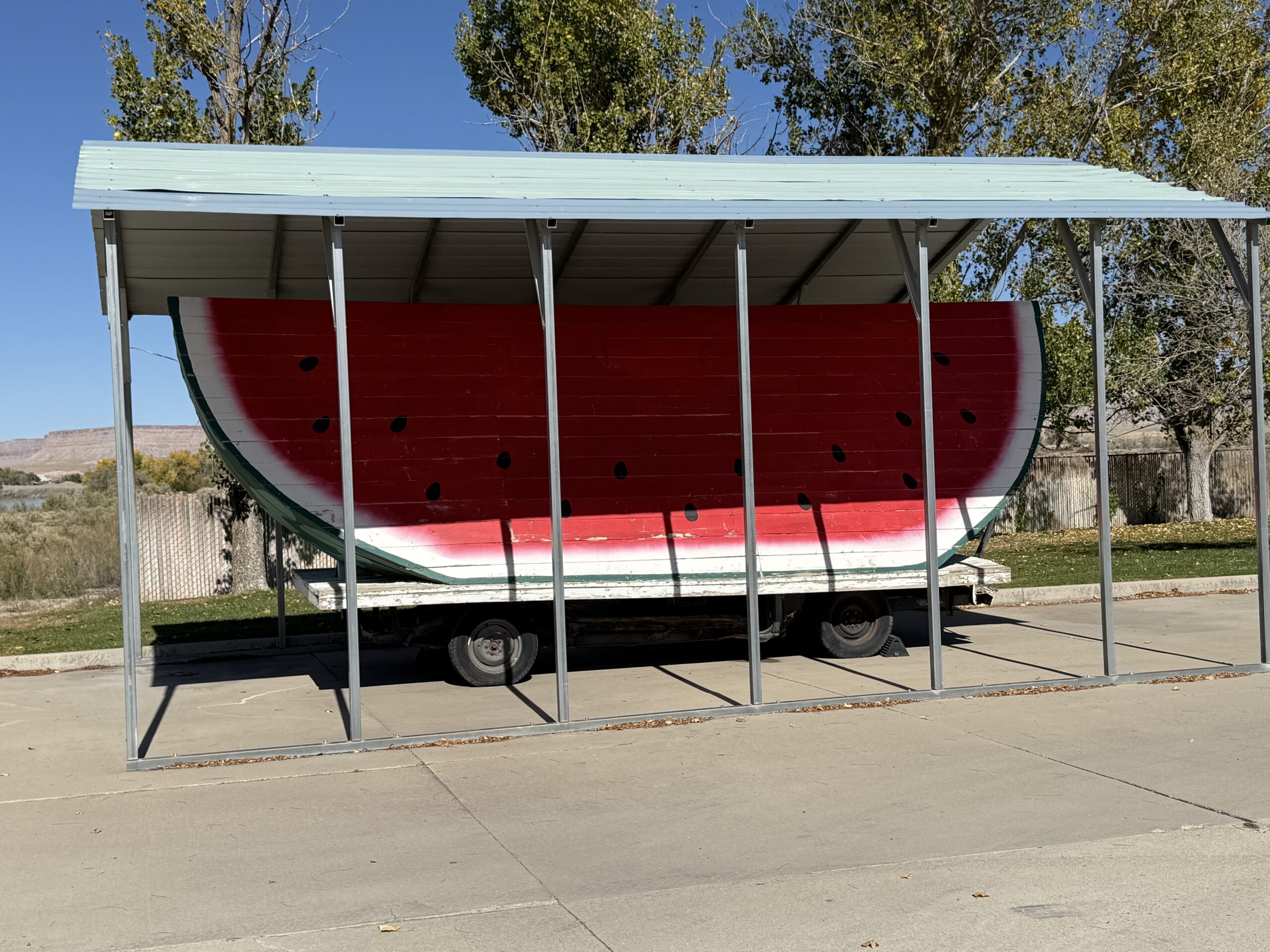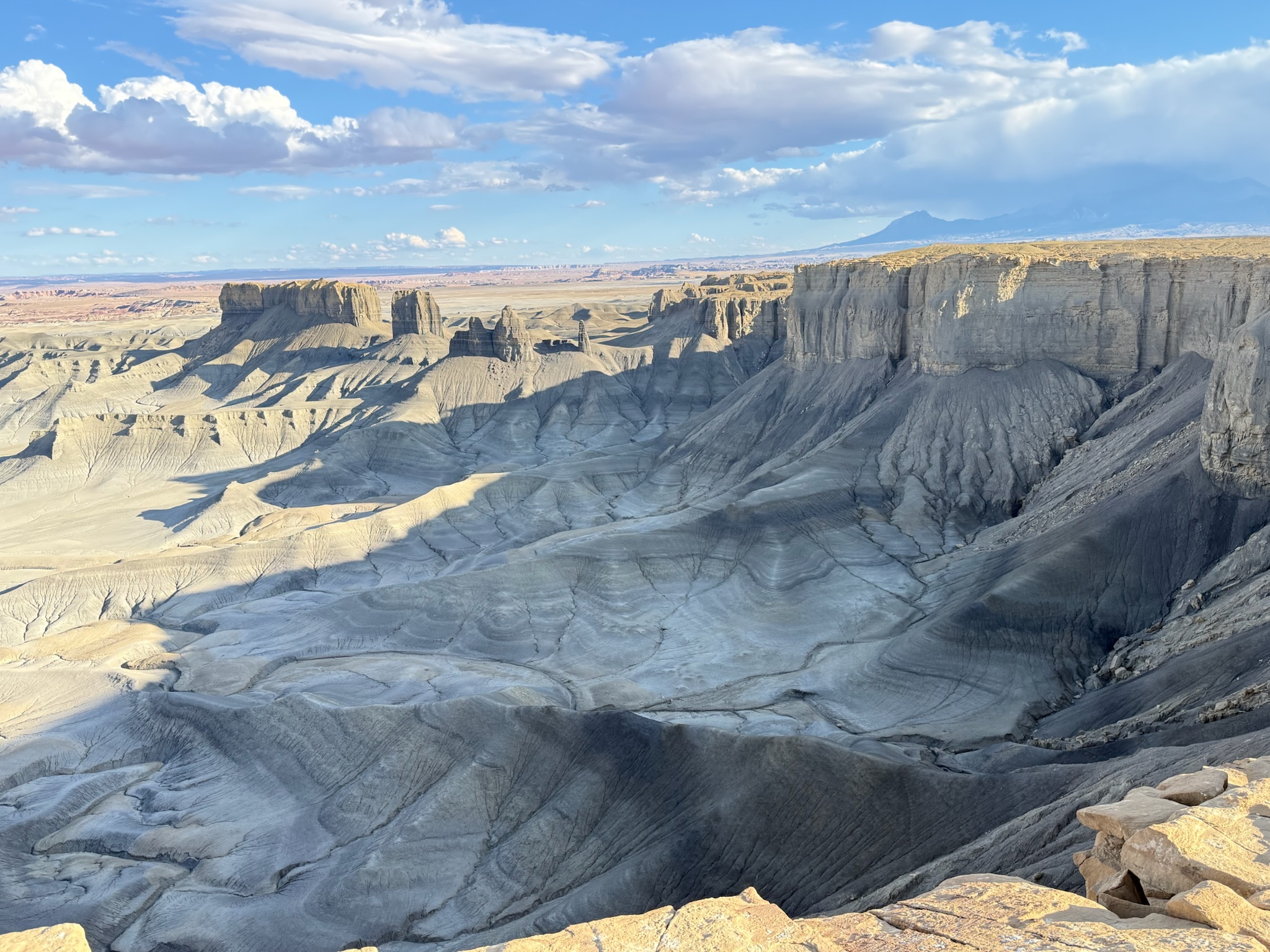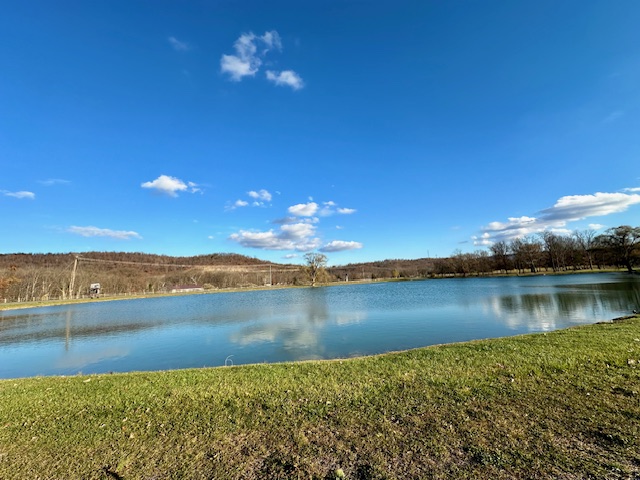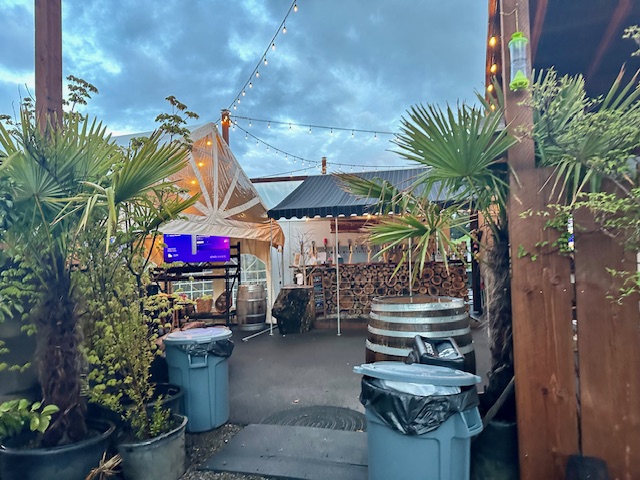New Holland is in Lancaster County which is known as Amish Country. There are over 40,000 Amish people living here, the majority of which are farmers. Lancaster has the largest concentration of Amish in the country.
We stayed at Spring Gulch, a Thousand Trails resort. Very nice, large sites, nestled amongst the trees. Quite a steep road to get to the site but great once you get to the top. Lots of American flags everywhere in the campsite and also many Trump banners. There were a few hiking trails leading off the road which was nice for Jax.
I was excited to see and learn about the Amish and determined to go for a horse and buggy ride. I found “Abe’s horse and buggy rides” on the Internet which was run by the Amish using smaller authentic buggies instead some of the larger carriages you see around town. So we set off to go for a ride. They have such crazy names of towns in Lancaster – Intercourse, Bird in Hand, Blue Ball, Paradise, Lititz. The cheeky name Intercourse for one which has many theories but one is there were two roads that intersected and it was originally called Crosskeys which evolved into its name today. When we got to Abe’s there was a horse and buggy waiting. We had the buggy all to ourselves and chatted to our Amish driver (who must have been in his late 70’s/80’s) as we well pulled peacefully along the road by a single horse. Our driver took us along the back roads pointing out Amish residences and telling us stories of the farms. As we trotted through the countryside we saw many Amish families on their farms and several buggies passed us. The Amish are excellent farmers and their immaculate farms are seen all over. The only way you could tell which farms were Amish was the lack of cars and trucks or the presence of buggies parked in the front. Fields so green I envied the horses and cows lying in them. Such a great experience.
After our ride we went into the village to the farmers market. What an amazing place. Most of the stalls were run by Amish women who sold a variety of cheeses, meats, sauces, needlework, quilting – you name it. We bought some bacon and a couple of different cheeses. They looked so delicious.
After that we went to the “Amish Village” to learn more about the Amish and their beliefs. We learned a lot from our tour guide – who was not Amish. The Amish came from Switzerland where they were often persecuted by the military. It’s interesting to note that they will not grow moustaches as it reminds them of their previous persecutors. At that stage they had also broken away from the Mennonites with Jacob Amman because of different interpretations of the bible and subsequently called themselves Amish.
We were led through an 1800’s Amish house and much of what we saw still applies today. The Amish curb interaction with outsiders and insulate themselves from modern technology and mass media. They still do not use electricity today but will adapt a modern appliance so it operates on propane or compressed air. They are willing to strike compromises with the modern world though, tapping its benefits while still preserving the Amish identity.
Their houses do not have pictures on the wall only the list of family members. No mirrors except one at the entrance of the house to ensure hair is sitting neatly under the cap. They live in houses and farms like us and create small Amish communities around themselves who they worship with and this takes place in different Amish homes. They will move benches to that house using a bench wagon so they can have a four hour service.
They wear plain clothes each having a specific meaning. At the age of 16 the children are allowed for 5 years to partake in activities with outsiders so they can decide if they want to remain with the Amish or not. They can choose who they want to marry but the person has to be Amish. Also they do not believe in polygamy. They have their own schools but no one is allowed to study past grade 8.
Humility is the hallmark of Amish beliefs. Mild and modest personalities are esteemed. Patience, waiting and yielding to others are marks of maturity. Obedience, conformity to goals and community activities are encouraged.
We wandered through the barns and fields and saw pigs, goats, cows, horses and chickens. There were even a couple of pairs of peacocks. There was also a school house fitted out with desks and books and also a couple of village stores. We bought some white chocolate peanut butter which was made by a local lady who crushed all the peanuts herself, and also some Amish churned butter. Can’t wait to try them.
The following day we drove out to Stoudtsburg Village, a little gem in Adamstown, Pennsylvania. The idea for the village was Ed and Carol Stoudt’s, owners of the nearby brewery, restaurant, antique mall and market. Designed with his ancestral home of Rothenburg, Germany in mind, Edward recreated a modern day version of an old European Village where homeowners could be both a resident and a merchant. Some of the shop owners are retirees, others were looking for a new career and still others are young families just starting out. The entrance to the shops are on the lower floor of their homes.
It was like stepping into Europe and we enjoyed walking through the village admiring the colourful houses, small shops, restaurants, the architecture, private patios and small gated yards. In the centre of the village is a fountain, where you watch “Peaches” the fountain nymph who sits high above and sprays water into the pool below. Such a lovely way to spend a Sunday.
On the way back to the RV we stopped to take photos of the Bitzer’s Mill Bridge which is a covered bridge that spans the Conestoga River in Lancaster County, Pennsylvania. It is the oldest bridge in the county still in use. In the late nineteenth century, there were well over 100 covered bridges across Lancaster County but today only 30 remain. In the past these bridges linked farmers and communities over waters that were impassable. The wooden roofed structures had coverings that served as weather barriers to extend the life of bridges. These sturdy arched truss bridges carried on the names of neighboring mill owners or farmers long after their descendants were gone.
Leaving Freeland behind, we continued north to New Columbia, Pennslyvania and the KOA campground for a one night stay. The campground was fairly empty and we were given a nice large site. As we had a late checkout, by the time we arrived in New Columbia it was around 3 pm and we were in no mood for getting back in the car to look for interesting things in the area. The weather had also turned and was rainy and cold. So I made a big pot of Chicken and Veg. soup, practiced the piano and we settled in for the evening. The following morning Jax got to meet some of the goats and a miniature horse in their petting zoo. He was especially fascinated especially by the noisy chickens running loose around the campground. I held onto him for dear life, I would hate him to grab one of them.

